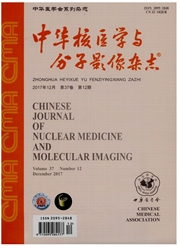

 中文摘要:
中文摘要:
诊断性全身显像(Dx-WBS)和Tg测定是判断DTC患者131I清除术后残留甲状腺(简称清甲)是否成功的主要手段.部分治疗后患者出现Tg阴性和Dx-WBS甲状腺床阳性(Tg-/Dx-WBS+),目前这一结果的临床意义不明朗.残留甲状腺正常组织或癌灶过小、NIS基因表达增强、甲状腺组织内炎性病灶可能是导致Tg-/Dx-WBS+的原因.对清甲后Tg-/Dx-WBS+的患者,进行随访观察而不立即治疗是更合理的选择.
 英文摘要:
英文摘要:
Diagnostic whole body scan (Dx-WBS) with 131I and serum Tg level are the main parameters to evaluate the effectiveness of thyroid remnant ablation in patients with DTC.Undetectable Tg and positive radioiodine uptake in the thyroid bed (Tg-/Dx-WBS+) may be found in some patients.However,the clinical significance is uncertain.A small amount of thyroidal remnant,a small DTC lesion,increased expression of NIS gene and autoimmune inflammation may all result in Tg-/Dx-WBS+.A "wait-and-watch" approach without rushing for high-dose radioiodine treatment might be a more reasonable approach for these patients.
 同期刊论文项目
同期刊论文项目
 同项目期刊论文
同项目期刊论文
 期刊信息
期刊信息
